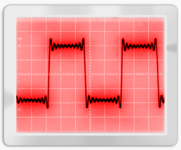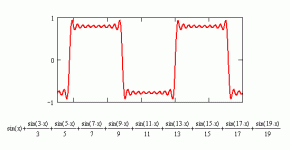Quite sure. 😉 It's all about being open minded.
I've got some nice Japanese Shakti and Chinese classical music CD's I got while in Asia. Plenty of Indian classical music and even some Pakistani's stuff. Just love Yo-Yo Ma's Silk Road Ensemble stuff (fantastically recorded BTW) and I went to see them when I was resident in Taipei (The crowd roared with approval when he addressed them in Mandarin).
I struggle with the thrash-metal though I have to admit . . .
🙂
Interestingly, when looking for Indian music to add to the collection, the wife is fussier than I am. She only likes North Indian music as a rule, whereas I quite like the regional differences.
I have not tried her on 'African Sanctus' though, which is very challenging in places.
I have not tried her on 'African Sanctus' though, which is very challenging in places.
I kind of understand 'ears only',........
Let´s pretend you do, but then you know that "ears only" is untrue
.....so why is it dishonest? (honest question)
because it is an incorrect label purposefully chosen and constantly used by someone who knows that it is incorrect. (Something like "ears only" does not exist when humans are listening).
Use "no peeking" instead and remember that for people who strongly believe in the inaudibility of an EUT the "not knowing" variant is the right choice.
ok there is clearly a subtle difference there but to me 'ears only' and 'no peeking' infer exactly the same thing. BUT I am not well versed in the art, hence the question.
Jakob, now I am confused.. 😕
SY uses 'ears only' as meaning 'ears only'.
JC uses 'ears only' as meaning 'ears, peeking, knowing, smelling, peer opinion, etc ad infinitum'.
Which use are you labeling as 'dishonest' here?
Jan
SY uses 'ears only' as meaning 'ears only'.
JC uses 'ears only' as meaning 'ears, peeking, knowing, smelling, peer opinion, etc ad infinitum'.
Which use are you labeling as 'dishonest' here?
Jan
ok there is clearly a subtle difference there but to me 'ears only' and 'no peeking' infer exactly the same thing. BUT I am not well versed in the art, hence the question.
The difference is anything but subtle.
"ears only" is actually (or most probable) impossible while "no peeking" is quite simple to achieve (means the "blind" or "double blind" property)
"no peeking" removes just one possible confounder but still a plethora of possible confounders (bias effects) remains.
"ears only" implies that every possible confounder is removed.
so you put an accoustically transparent curtain in front of the EUT. you cannot peak and only have your ears to judge with. What am I missing?
so you put an accoustically transparent curtain in front of the EUT. you cannot peak and only have your ears to judge with. What am I missing?
Is there such a thing as an acoustically transparent curtain? There are mic "popper stopper" devices to put between a mic and vocalist. There are also grill cloths, and various scrims. They all affect the sound somewhat, making it sound more muffled, and less detailed at HF. However, turning off the lights or wearing a blindfold (that doesn't obstruct the ears) would probably qualify as acoustically transparent. That being said, isn't it only an issue for speakers? Putting an amp or DAC where it can't be seen shouldn't be a problem.
Harman International think so.I cannot believe they don't exist.
Edit: http://audio-head.com/the-harman-tour-part-1-loudspeaker-audio/ with picture.
I cannot comment on effectiveness other than they have people working for them who are a lot cleverer than wot I am.
Edit: http://audio-head.com/the-harman-tour-part-1-loudspeaker-audio/ with picture.
I cannot comment on effectiveness other than they have people working for them who are a lot cleverer than wot I am.
Last edited:
so you put an accoustically transparent curtain in front of the EUT. ?
THè English channel ? I assumed one listens ears only every day, who cares what THE gear looks like after à couple of days.
The wife cares about unboxed circuit boards for some reason. Other gear she seems quite happy with 😉
Harman International think so.I cannot believe they don't exist.
Edit: The Harman Tour Part 1 - Loudspeaker Audio | AudioHead with picture.
I cannot comment on effectiveness other than they have people working for them who are a lot cleverer than wot I am.
Looks fine for home theater speaker comparisons, but not for complete listening tests of near field mix monitors.
They say, "Sean says the smaller room size helps increase a greater sense of 1st reflection thus making the test more sensitive to the off-axis performance of the loudspeaker."
For some listening tests, no 1st reflection should be there at all. Off axis performance can be judged to some extent by moving around the speaker and listening to it in the near field from different positions.
Also, there have been times I turned up the volume a bit, walked out the door and down the hallway 10 feet or so and listened there. Sometimes you notice things there you don't notice close up.
Not sure the point you are making. Given near field users seem happy with crippled NS-10s would appear mix monkeys peek for cred?
Or should all double blind testing be done by the wife in the kitchen?
Or should all double blind testing be done by the wife in the kitchen?
"This is a general feature of the Fourier transform: widening in one domain corresponds to narrowing and increasing height in the other. This results in the oscillations in sinc being narrower and taller and, in the filtered function (after convolution), yields oscillations that are narrower and thus have less area, but does not reduce the magnitude: cutting off at any finite frequency results in a sinc function, however narrow, with the same tail integrals. This explains the persistence of the overshoot and undershoot...."
Attachments
Last edited:
I struggle with the thrash-metal though I have to admit . . .
Now we have something in common, so do I 🙂
I've got some nice Japanese Shakti and Chinese classical music CD's I got while in Asia. Plenty of Indian classical music and even some Pakistani's stuff. Just love Yo-Yo Ma's Silk Road Ensemble stuff (fantastically recorded BTW) and I went to see them when I was resident in Taipei (The crowd roared with approval when he addressed them in Mandarin).
I struggle with the thrash-metal though I have to admit . . .
🙂
Me too I have a huge pile of Koto, Guchin, traditional Chinese opera (very challenging), Tibetan chants/ritual music, Hindu devotional music, but I still mix in a little Crust, Oi, Crass now and then. I find the Sheffield Labs track record boring as all get out and prefer the box set 45 RPM of Test Dept especially "Kick to Kill" to get the woofers moving.
Last edited:
Not sure the point you are making. Given near field users seem happy with crippled NS-10s would appear mix monkeys peek for cred?
As I mentioned, the NS-10 is not a crippled speaker, it is just hard to listen to and relax at the same time. But good for some things, like critical appraisal.
'Mix monkeys' sounds derogatory to me. Is that just my shallow understanding of English, or do you want to put a point across, and if so, what is it?
Last edited:
Not sure the point you are making.
Earlier we were talking about what can or can't be heard in terms of equipment performance. I expressed a concern that listening tests someone devises to test someone else's claim of being able to hear this or that may not replicate all the necessary conditions to hear whatever it is. Some things are easy to hear and other things are possible, but very close to the limits of what is possible. If we do run tests to try shed more light on what is hearable verses what must be imagination, then I think we should make a good effort to conduct tests in a way that gives every opportunity to hear whatever may be there. My personal experience is that sitting halfway across a room with speakers behind a curtain makes some subtle things harder to hear. For everyday listening, I don't think there is any reason to go to extreme lengths to make sure every little detail can be heard.
Then again there are some absolutely amazing choral arrangements that I very thoroughly enjoy (and, IMO, sound marvelous regardless one's religious affiliation).
The choral pieces in "Bambi" are spectacular. I miss the classic mixed male female choruses of the 40's, 50's though I think the mics of the time had something to do with it.
Most of us in a domestic environment sit in a room across from speakers.
I am sure Harman somewhere has a nearfield test environment but that is a specialised test case surely?
I want to hear every detail. That's why I also have etymotic ER4 and koss ESP/950 as well as speakers. In fact that's why many people are here. Every last detail squeezed from the recording. In some cases a few added that weren't there before.
I am sure Harman somewhere has a nearfield test environment but that is a specialised test case surely?
I want to hear every detail. That's why I also have etymotic ER4 and koss ESP/950 as well as speakers. In fact that's why many people are here. Every last detail squeezed from the recording. In some cases a few added that weren't there before.
- Status
- Not open for further replies.
- Home
- Member Areas
- The Lounge
- John Curl's Blowtorch preamplifier part II

